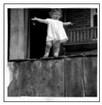Ivy Covered Thoughts
Now that we are back in the short days, long nights time of year, I am back to podcast and audiobook listening. I love these because I can move around and do things while I “read.” Over the weekend I was catching up on an eight-part series in a podcast called “Articles of Interest.” This podcast defines itself as being about “what we wear,” which may sound like a light and fluffy fashion podcast, but is so much more. I was about to explain how much more to my son one day when he said, “No, I get it, sociology, anthropology, history,”—all the things he likes to read and learn about. My interest in those topics, especially history, has always been related to what was going on in normal, everyday life, especially in the home.
The series was called “American Ivy,” which was about the style of clothing that a lot of people may know as “preppy,” but preppy is just a subset of ivy. The style is called ivy because it started in the Ivy League schools in the northeastern part of the U.S., but I learned from this podcast that the real birthplace of ivy was at Princeton University.
I grew up in Charleston, South Carolina, and lived there until I was 20 years old. Charleston, being way down the East Coast from Princeton, developed its own flavor of ivy. After all these years of living in mostly rural Texas, when I go back to Charleston, it takes my eyes a while to adjust to seeing men of all ages in pastel polo shirts, chino or pastel plaid shorts, and flip-flops. The dressed-up men, like the Broad Street lawyers, may have on a seersucker suit or maybe even a navy Brooks Brothers style suit or suit jacket with khaki chinos, along with a bright pastel shirt with a madras tie or a tie with little crabs or flamingos embroidered on it.
Having grown up with this, I thought it was the way people dressed. Then I went to college at the University of Tennessee in 1981, one year after “The Preppy Handbook” came out. My first roommate was from coastal Virginia, so she dressed similarly to the Charleston folks, but with an even preppier twist. I used to joke that she was straight out of the pages of the Handbook. The longer I was at Tennessee, the more layers of prep-ness I learned about and observed. For example, all the pastels were more coastal and warm-weather related. There was a whole ‘nother wardrobe for colder weather and more inland preps.
Listening to this podcast not only taught me about the origins and practical reasons for all of the variations on ivy/preppy, but about the history of clothing and ready-to-wear clothing in general. Did you know that the ability to walk into a shop and buy a ready-made item of clothing originated in the United States? Have you ever considered how different your everyday life would be if you did not have the ability to buy ready-to-wear clothing? What if you or someone in your family had to make everything you wore, even your underwear? Your socks? I know we would all be a lot busier!!

